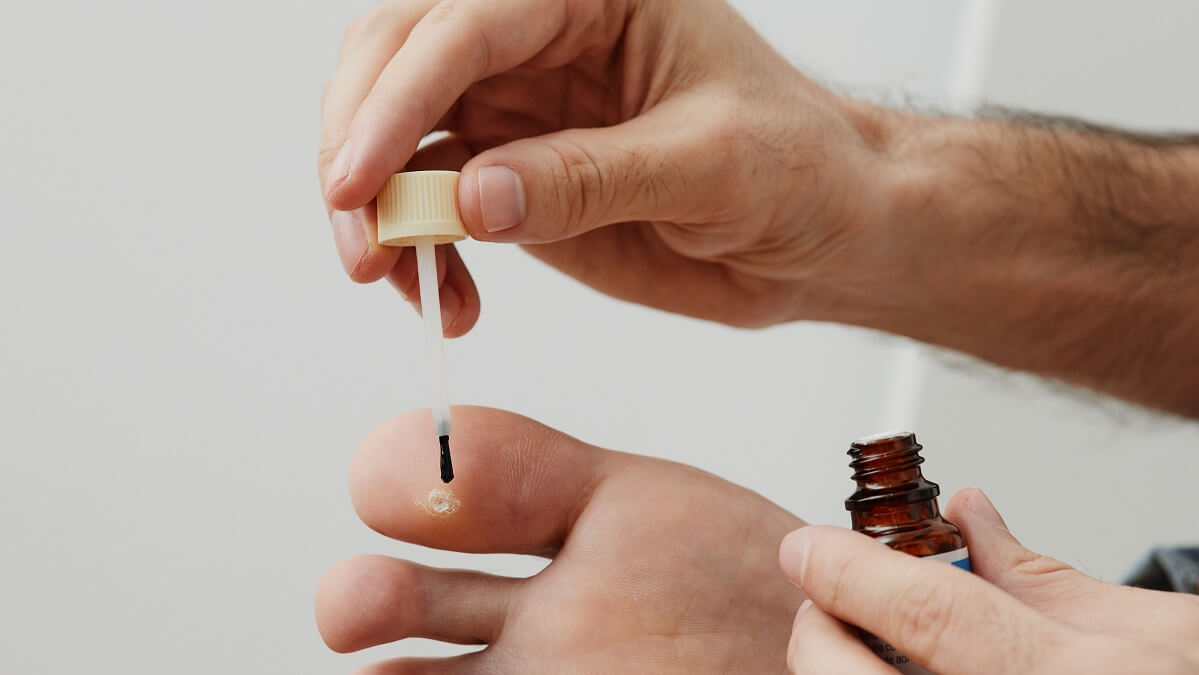Warts are small lumps that often develop on the hands and feet. They vary in appearance and can develop singly or in clusters.
Although warts are non-cancerous, they can resemble certain cancers and certain cancers can resemble warts. Visit your doctor if you find a skin growth that doesn’t seem quite right.
Most people will have a wart or two at some point in their life though they tend to affect children and teenagers more than adults.
Not only can warts look unpleasant but some, such as those on the soles of the feet, can make walking painful.
The good news is, they are mostly harmless, and treatment is often simple and effective.
Here is a guide to the different types of warts and how to get rid of them.
What causes warts?
Warts are caused by an infection with the human papillomavirus (HPV).
The virus causes an excess amount of keratin, a hard protein, to develop in the top skin layer (epidermis). The extra keratin produces the rough, hard texture of a wart.
Among the 150 strains of HPV, about 10 cause skin warts. Certain other strains cause genital warts. Some sexually transmitted types of HPV are implicated in cervical and other genital cancers, but the strains that cause skin warts have rarely been linked to cancer.
We all repeatedly come into contact with HPV either through skin-to-skin contact or touching a contaminated item. Objects such as towels and shoes, areas surrounding swimming pools, or the floors of communal changing areas can all indirectly transmit warts.
However, only some people develop warts and it’s thought that some are just more prone to them than others.
Warts are thought to be contagious for as long as they are present; they can also be spread to other parts of your own body.
Types of warts
Some of the types of warts caused by HPV include:
Common warts
Raised, rough surface, sometimes with dark specks. Often light-coloured to grey or brown. Found mostly on the hands and knees but may appear anywhere on the body. Those under or around the fingernails and toenails can be hard to treat.
Flat warts
Flat or slightly raised, smooth and pink. Smaller than other warts.
Found mostly on the face, hands, and shins. They’re less common than other warts, but when they do appear, it’s often in large numbers.
Plantar warts
Rough, spongy surface kept flat by walking. Often grey or brown with dark specks. Found only on the soles of the feet. Clustered plantar warts are called mosaic warts.
Filiform warts
These look different to most warts. They have long, narrow projections that extend about one to two millimetres from the skin.
They can be yellow, brown, pink or skin-toned, and typically form on the face – particularly near the eyelids and lips.
Genital warts
Grey or off-white lumps with a grainy ‘cauliflower’ appearance. Since genital warts are sexually transmitted, the penis, vulva and anus are most commonly affected.
Genital warts should always be taken seriously. Not only can they cause pain, discomfort and itching, but they can also be warning signs for strains of HPV that can lead to cancer of the cervix and anus.
How to get rid of warts
Not all warts need to be treated, in fact, around 65 per cent will clear up by themselves within two years.
If a wart is painful or in an area that causes discomfort or embarrassment, you can choose to treat the wart to help it move along. Remember, warts can be stubborn and may need more than one treatment.
Common methods of treatment include:
Topical ointments or creams applied to the wart. Chemicals such as salicylic acid or lactic acid are typically present to soften the keratin protein. The ointment may need to be applied for at least three months.
Freezing the wart (cryotherapy). A health professional can use liquid nitrogen to freeze the wart. Cryotherapy can be painful, and you may need more than one round of treatment.
Surgical removal under local anaesthesia. Warts can be scraped or cut out of the skin with a procedure called curettage. The wound generally heals in seven to 10 days, but it can be painful and cause scarring.
Laser treatment. A laser is used to destroy the tiny blood vessels inside the wart. Without blood, the wart dies and falls off.
The laser may feel like a rubber band snapping against your skin. You won’t feel much pain after the procedure is done and the area should heal fully in under four weeks.
How to prevent warts
There’s no definite way to stop yourself from developing a wart but there are ways to lower your risk and avoid spreading yours to others:
- wash your hands regularly
- don’t pick at your warts
- cover warts with a bandage
- keep your hands and feet dry
- wear shower shoes or thongs when in a locker room or communal bathing facility
- don’t share towels or shoes with others
- wash your hands if you have direct contact with your wart
- avoid shaving over a wart
- don’t touch another person’s wart
- if you have a plantar wart, clean your shower base and change your socks daily.
Have you had a wart successfully treated? How long did it take to go? Share the best treatment you’ve found in the comments section below.
Also read: Unexpected places you can get skin cancer
Disclaimer: This article contains general information about health issues and is not advice. For health advice, consult your medical practitioner.

